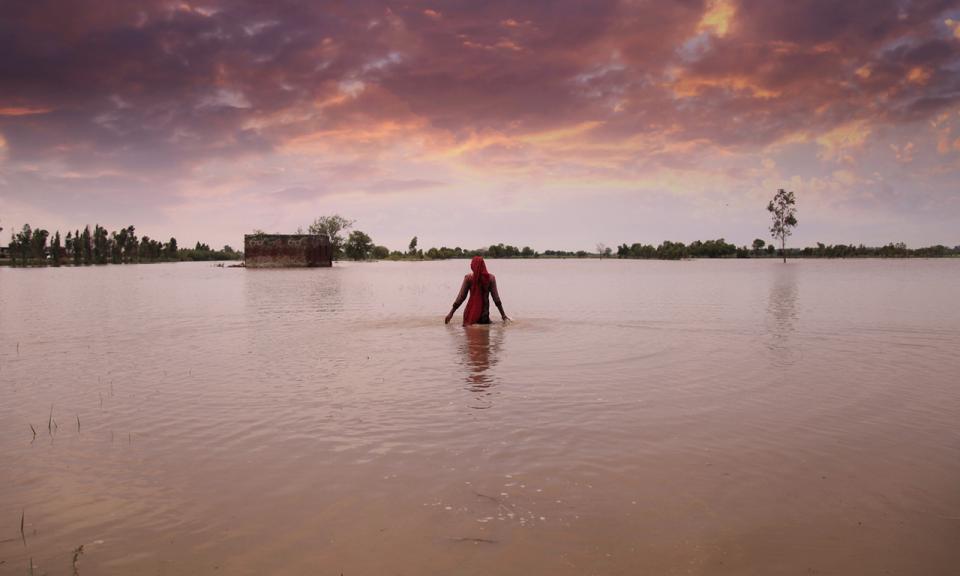
Written by
Published
Category
New research shows larger banks are lending less to small farms affected by abnormally high temperatures, with potentially huge repercussions for a large portion of the world’s population
When unseasonably heavy rain hammered the grain fields of northern India in August 2022, farmers watched as their crops were destroyed and their revenues plunged to just a fraction of what they’d hoped for.
Most businesses are vulnerable to the effects of climate change, but farmers worldwide are more exposed than most to extreme weather: drought, heat, or too much rain can devastate their crops and income.
Vast swathes of the world's population work in agriculture, particularly in developing nations, where farming is often a backstay of the economy. Climate change will, in future, determine the viability of agriculture, but how well farms and farmers can adapt to higher temperatures will depend upon the level of financing available. With this in mind, it’s important to understand how the agricultural sector’s access to funds varies alongside local climate conditions.
Small farms in vulnerable areas look less and less like a safe bet for banks. How easily can farmers secure loans when climate change affects their livelihoods? We’ve looked at the credit supplied by major banks to small farms across the US – and the results are revealing.
We wanted to cast light on the plight of farmers – and, by default, small businesses with limited options to move – when extreme weather strikes. We also wanted to reveal more about how banks respond to the present and future risks created by extreme weather events.
Our research has revealed that, when temperatures soar to abnormal highs, larger banks lend less to small farms affected by these extremes – sometimes cutting the number and volume of loans by up to 4.5 per cent.
Why are banks cutting loans in the face of climate change?
A heating climate affects farmers’ productivity and success in the short and long term. As it appears more likely that nations will fail to limit temperature rises to below two degrees centigrade above pre-industrial times (as promised under the Paris Agreement), more spoiled crops and livelihoods are inevitable. Productivity will dwindle, farmland will depreciate, and the value of property and machinery will deteriorate.
Banks are often accused of contributing to climate change by funding dirty industries and failing to assess climate risks adequately in their lending; there is a perception that the complexity of climate change means banks struggle to calculate the cost of future risks and apply amended borrowing costs accordingly. Many accuse banks of simply withdrawing loans, for "safety", instead.
Our work shows that, contrary to that popular belief, banks calculate risks posed by climate change and respond accordingly – they are more across the problem than regulators believe. We show that banks also factor climate change into their future lending decisions – what happened last year will determine how banks extend credit this year, for instance.
We have managed to disentangle the separate stories between supply and demand of loans. We’ve also factored in a potential drop in demand for loans due to small farmers leaving the region.
We’ve done this partly by focusing on the lending decisions of larger banks – which, unlike their regional counterparts, can choose to withdraw credit from small farms in climate-affected regions in favour of safer bets elsewhere. And credit from these larger banks declines between 2.4 and 4.5 per cent in regions struck by soaring temperatures because banks believe these farmers are more likely to default on loans.
Impact of climate-related lending decisions
Policymakers should take note. Small farms depend heavily upon banks to fund their industry amid unpredictable crop yields and prices. If banks withdraw credit to farmers amid the onslaught of climate extremes, who will take responsibility for their welfare and livelihoods? Will private investors and fintech operators step in to lend to those in need – and at what price?
What if small businesses and households remain reluctant to leave a region even as climate conditions grow more hostile? This reluctance is not without precedent – even after the devastation of Hurricane Katrina, some residents of New Orleans chose to return to the city’s Lower Ninth Ward despite it remaining at risk of ruinous floods if another hurricane were to strike.
As temperatures rise, so does the number of livelihoods at risk of climate extremes, particularly in developing nations. While agriculture, food, and related industries account for 5.0 per cent of the US GDP and provide 10 per cent of employment, these ratios are far higher in areas of Asia and Africa. In India, for instance, more than 40 per cent of the population work in agriculture.
Where do the boundaries of government responsibility lie? Loans and investments are essential for day-to-day living, from buying a car to educating a child to starting a business. What happens if this resource dries up? How could authorities choose to regulate the likes of community banks so they can continue to lend? What should their capital requirements be? How can authorities ensure the effects of adverse climate shocks don’t spill over into other regions through these lenders?
These are all delicate questions in a complex market, and regulators and industry must urgently confront them.
This article draws on findings from "Information on Hot Stuff: Do Lenders Pay Attention To Climate Risk?" by Emdad Islam (Monash University) and Mandeep Singh (Imperial London).



